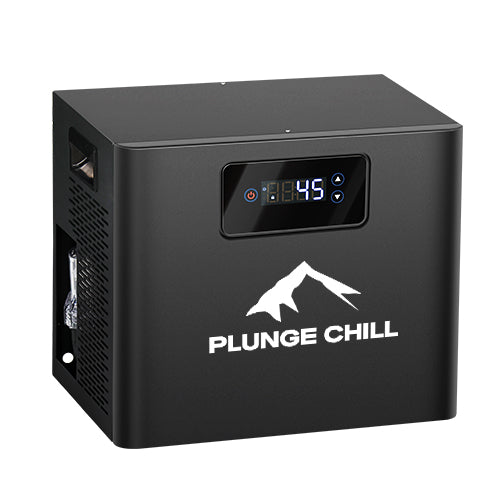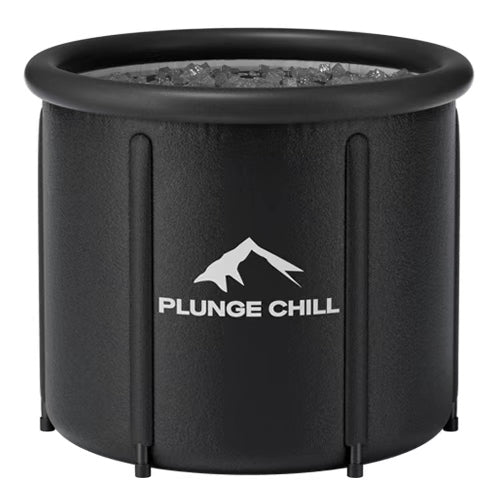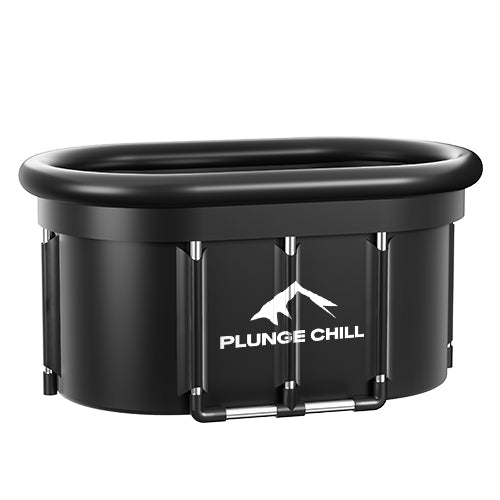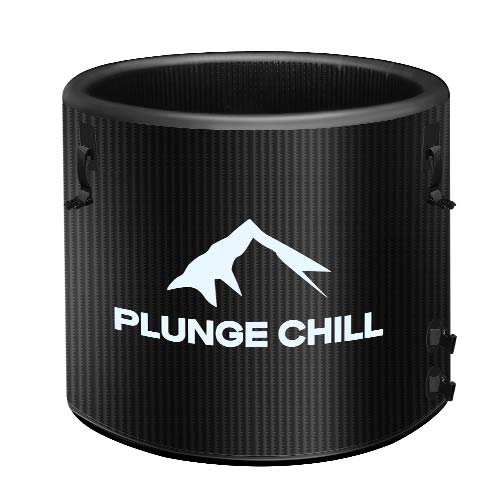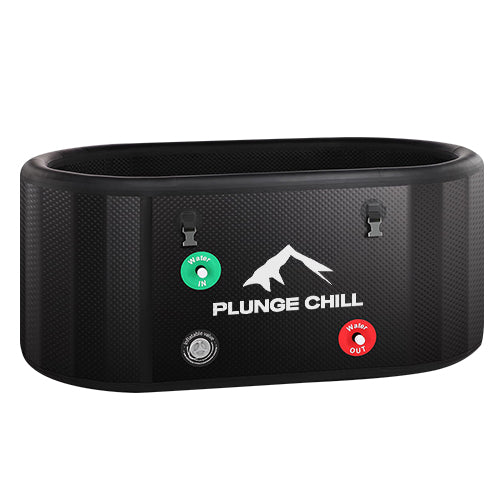Work has never demanded more of our attention, energy, and emotional bandwidth. Quick, reliable ways to downshift from high arousal to focused calm are valuable, whether you are on a shop floor, in a clinic, or at a laptop between meetings. Cold water immersion, broadly defined as deliberate brief exposure to cold water via shower, plunge, or ice bath, has emerged as a science‑backed option to modulate stress physiology, sharpen alertness, and support sleep and resilience. It is not a cure‑all and it carries risks, but used judiciously it can be a practical tool in a modern stress-management toolkit.
This article synthesizes what high‑quality reviews and laboratory studies suggest about stress, mood, and work‑relevant outcomes, then translates those findings into safe, actionable routines you can apply on a workday. It also covers buying and care tips for home or office setups and flags important cautions, including special considerations if you lift weights and care about muscle growth.
What Cold Water Immersion Is—and Why It Matters for Stress
Cold water immersion (CWI) typically means chest‑level immersion or showers at water temperatures of 45–59°F for exposures that can be as short as 30 seconds and, in some studies, much longer. A recent PLoS ONE meta‑analysis pooled 11 randomized trials in 3,177 healthy adults who used baths or showers at these temperatures; the authors examined stress, sleep, mood and other outcomes across hours and days after exposure. In daily life, most people do not need extreme doses. Practical use cases center on brief cold showers or short plunges at 50–59℉ for a few minutes, calibrated to tolerance and health status.
From a biological standpoint, CWI is a controlled stressor. The initial minutes drive sympathetic activation and a cold‑shock response: breathing rate rises, heart rate and blood pressure increase, and stress hormones such as norepinephrine surge. This acute arousal is followed by rewarming and a shift back toward balance. The neurohormesis concept, discussed in The Journal of Neuropsychiatry and Clinical Neurosciences, frames cold exposure as a small dose of stress that can nudge adaptive systems in the brain and body toward greater resilience.
How Cold Water Shifts Stress Biology
In controlled laboratory protocols, whole‑body cold water at roughly 57.2℉ for 10 minutes elevated epinephrine, norepinephrine, and cortisol, along with markers of metabolic heat production and hyperventilation, indicating a robust acute stress response. Immunological signals such as interleukin‑6, interleukin‑1β, and tumor necrosis factor‑α changed on a delayed or dose‑dependent basis, illustrating that the immune system is also modulated for hours after exposure. This study, published in the International Journal of Hyperthermia, found no increase in common‑cold symptoms within 48 hours among healthy young men, an important short‑term safety signal under those conditions.
At the neural level, a five‑minute head‑out bath at 68℉ in cold‑exposure‑naïve adults increased positive affect and was linked to changes in interaction between large‑scale brain networks involved in attention, salience, and self‑regulation on fMRI. This helps explain why many people feel alert, clear, and emotionally reset after a cold exposure. Related work led by the University of Oregon and published in the Journal of Thermal Biology reported lower heart rate, lower blood pressure, and lower cortisol after a 15‑minute immersion, alongside improved mood three hours later; ultrasound suggested subtle shifts in vascular shear stress that could have cardiovascular relevance.

What the Evidence Says About Stress, Sleep, Mood, and Work Readiness
The most comprehensive synthesis to date in PLoS ONE emphasizes that CWI’s effects depend on timing. The meta‑analysis detected a significant acute spike in inflammation immediately and at one hour post-immersion, followed by a significant reduction in perceived stress at about 12 hours. No significant stress effects were detected right away, at one hour, or at 24–48 hours. Improvements were reported in sleep quality and overall quality of life in some studies, while effects on mood were inconsistent in pooled analyses. A narrative finding in that review and in Harvard Health Publishing highlights a 29% reduction in sickness absence among adults who added brief cold blasts to their daily showers for several weeks, though direct immune biomarkers did not change in the short term.
In practical terms, that time course suggests a strategic way to stage cold exposure relative to your workday. If your workload peaks midday, morning CWI may align with the delayed stress‑reduction window. If you need calm through an evening shift, a lunchtime protocol may fit your schedule better. This is an inference drawn from time‑course data in the PLoS ONE review and should be treated as a reasoned, medium‑confidence suggestion rather than a prescriptive rule.
Time‑Dependent Effects at a Glance
|
Outcome |
Immediate (0 h) |
1 hour |
12 hours |
24–48 hours |
Notes and sources |
|
Inflammation |
Increased |
Increased |
Not assessed in meta‑analysis |
Not emphasized |
Pooled analysis shows transient inflammatory increase; PLoS ONE |
|
Perceived stress |
No clear change |
No clear change |
Reduced |
No clear change |
Significant reduction at 12 hours only; PLoS ONE |
|
Mood |
Mixed |
Mixed |
Mixed |
Mixed |
Group studies show inconsistency; single‑study signals include mood gains at 3 hours; PLoS ONE; Journal of Thermal Biology |
|
Sleep |
— |
— |
Improved in some groups |
— |
Improvements noted in men in one synthesis; Harvard Health Publishing |

Translating Science Into Workday Practice
For healthy adults without contraindications, the workplace‑relevant benefits of CWI seem to cluster around stress relief on a delay, short‑term alertness and arousal, potential sleep improvements, and possibly fewer sick days over time. To weave those into a routine:
Start with a shower‑based approach. Evidence summaries from UCLA Health and Everyday Health describe practical cold showers below about 60°F for two to three minutes at the end of a warm shower, repeated most days. This offers a low‑risk, low‑cost entry point, especially for people who have limited access to a plunge tub. A separate pragmatic guideline from UF Health Jacksonville suggests aiming for roughly 11 total minutes per week split across several short sessions; treat this as a popular expert suggestion rather than a clinical prescription.
Layer in breath control and mindful pacing. The most stressful moment is the first 20–40 seconds while your breathing reflex spikes; steadying your exhales helps blunt the gasp reflex and restores a sense of control. Stanford Lifestyle Medicine notes that facial immersion alone can trigger a parasympathetic “diving reflex” through vagal pathways—a trick some people use for quick emotional regulation in tight spaces where a full shower is not possible.
Use the clock to your advantage. Given the 12‑hour stress‑reduction window observed in the PLoS ONE analysis, morning showers may help buffer stress later in the workday. Conversely, if sleep is your focus, earlier evening cold exposure may prepare a more restful night for some, while others may find late‑evening stimulation too alerting. Individual responses vary; adjust based on personal data and how your body and mind feel.
Safety, Risks, and Who Should Avoid It
Cold is a potent stimulus. Clinicians at the Mayo Clinic Health System, Harvard Health Publishing, and Baylor Scott & White Health emphasize that cold shock can trigger involuntary hyperventilation and transient spikes in heart rate and blood pressure. People with cardiovascular disease, uncontrolled hypertension, arrhythmias, Raynaud’s phenomenon, autonomic neuropathies, or significant respiratory conditions should talk with a clinician before trying. Dartmouth Health notes that many people do fine with brief exposures at moderate cold, but self‑screening and conservative limits are essential.
Keep sessions short, especially at first. Starting with 30–60 seconds and working up to two to five minutes is a common recommendation across hospital and academic sources. Extending beyond ten minutes requires experience, careful temperature control, and clear medical guidance. Avoid extremely cold water if you are not conditioned. For open‑water plunges, never go alone, avoid currents, and know the exit points.
Warm up gradually after exposure. Healthline describes good aftercare: towel dry promptly, dress in warm layers starting with the torso, sip a warm drink, and allow gentle movement. Avoid jumping straight into a hot shower if you are lightheaded or shivering hard, because rapid peripheral vasodilation can cause dizziness or an afterdrop sensation.
A Special Note if You Lift Weights
If muscle growth is a priority, be cautious with post‑lift plunges. The PLoS ONE review and Mayo Clinic Health System both point to evidence that frequent cold exposure immediately after resistance training can blunt hypertrophy and strength adaptations over time. Many strength athletes therefore reserve cold plunges for rest days, place them far from lifting sessions, or keep them brief and moderate. Endurance training appears less affected by this trade‑off. This is a high‑confidence, evidence‑aligned caution for lifters.

Practical Protocols You Can Try
A simple two‑week acclimation plan for desk workers starts with finishing three to five morning showers cold. Drop the temperature to a level that feels unambiguously cold but allows calm nasal breathing. On day one or two, go cold for 30 seconds at the end of your shower. In the second half of the week, extend to 60–90 seconds. In week two, aim for one to three minutes most days. Keep breathing steady and exit early if you cannot control your breath.
If you have access to a plunge tub, consider one short session at 50–59℉ on a non‑lifting day for three to six minutes as tolerated, keeping your head out of the water and your hands and feet in water only if comfortable. Breath control matters as much as the thermometer reading. As a personal, experience‑based observation with low generalizability, short cold showers during writing sprints have reliably helped me reset between tasks and return to the keyboard calmer and more focused within minutes. Because experiences vary, treat anecdote as a prompt to run your own small, careful trials.
Buying and Care Tips for Home or Office Setups
If you are curious but not ready to invest, use what you have. A standard shower on its coldest setting is sufficient to probe your response, and many protocols in hospital and university guidance start here. A household bathtub with ice is the next step up, though it is less precise day‑to‑day.
Dedicated plunge units offer tighter temperature control, filtration, and convenience. The Mayo Clinic Health System notes that fully featured tanks can cost up to several tens of thousands of dollars. For small offices, a portable insulated tub with a chiller may strike the right balance between control and cost. Whole‑body cryotherapy chambers are an entirely different modality using cold air rather than water and are not necessary for workplace stress relief.
Entry Points and Equipment Options
|
Option |
Typical cold range |
Typical time |
Cost band |
Pros |
Cons |
Best for |
|
Cold shower |
Below about 60°F |
1–3 minutes |
Low |
Ubiquitous, fast, easy to scale |
Harder to quantify exact water temperature |
Daily stress buffering and alertness |
|
Bathtub with ice |
50–59°F common |
3–10 minutes |
Low–Medium |
Whole‑body immersion, inexpensive |
Ice logistics, less precise |
Occasional deeper sessions at home |
|
Portable plunge with chiller |
39–55°F adjustable |
2–8 minutes |
Medium |
Stable temperature, filtration, convenience |
Upfront cost, maintenance |
Frequent use, tighter dosing |
|
Dedicated spa‑grade unit |
39–55°F adjustable |
2–8 minutes |
High |
Best control, durable, hygienic |
High cost, space requirements |
Teams, wellness rooms |
|
Cold‑air cryotherapy chamber |
−200 to −300°F air |
2–3 minutes |
Medium–High |
Short sessions, no water |
Different stimulus, not water immersion |
Niche preference rather than stress routine |
Maintain hygiene and safety. Keep tubs clean according to manufacturer guidance, shower before plunging if multiple people use the same unit, and store a dedicated thermometer and a simple timer nearby to avoid guesswork. Place a non‑slip mat beside the unit and keep warm layers and a towel within reach for the exit.
A jewelry‑specific note for readers of a jewelry blog: fingers can contract slightly in cold, and water lubricates skin. It is prudent to remove rings and bracelets before immersion to avoid accidental slippage into a drain or tub. This is a practical precaution rather than a research‑based conclusion; it reflects common‑sense handling and is offered with medium confidence.
Pros and Cons in Context
The most robust evidence relevant to work shows a delayed reduction in perceived stress at about 12 hours, potential gains in sleep quality and quality of life, and lower sickness absence among people who adopt brief cold finishes to their showers. Laboratory signals for improved alertness, lower cortisol, and better mood a few hours post‑exposure support why many feel sharper and steadier after cold.
On the other hand, acute exposures raise inflammation and arousal immediately, which is expected for a hormetic stimulus. That activation is not inherently harmful in healthy people but is a reason to dose modestly and avoid extremes. Pooled data show inconsistent effects on mood and no strong short‑term immune biomarker changes, so expect subjectivity and variance. Most importantly, certain heart, vascular, and autonomic conditions make cold exposure a poor fit without medical guidance.
A Workday Routine That Respects the Evidence
An all‑purpose routine for many healthy adults is a morning shower ending with one to three minutes of cold, combined with a single short plunge once or twice a week for those who enjoy it. If you lift weights for hypertrophy, keep cold exposure away from your lifting window. If sickness absence and general resilience are priorities, consider daily cold‑finish showers for a few weeks, as studied in adults who saw fewer sick days, although mechanism remains unclear.
As your tolerance grows, you will likely learn that the combination of temperature, time, and breathing, not heroics, is what makes this both sustainable and useful.
Key Cautions and Edge Cases
Start conservatively if you are older, underweight, or have low blood pressure, and stop immediately if you feel chest pain, confusion, or uncontrolled shivering. Do not submerge your head in icy water unless you are experienced and cleared by a clinician; simple facial splashes or brief facial immersion in cool water may be enough to activate calming reflexes when you are experimenting. Remember that cold exposure during or after prolonged fasting, heavy alcohol use, or sleep deprivation can feel more intense; reschedule rather than push through if you are depleted.
Takeaway
Cold water immersion is not a panacea, but its stress‑relevant effects are distinct and time‑dependent. Expect a short‑lived spike in arousal and inflammation, followed by a window later in the day where perceived stress can be lower. A simple routine of cold‑finish showers, careful dosing, and steady breathing may help you feel calmer and more resilient at work, and it can be done with almost no equipment. Use clinical common sense, especially if you have cardiovascular or autonomic conditions. Treat this as a small, repeatable practice that complements the mainstays of stress management: sleep, movement, nutrition, light, boundaries, and social support.

FAQ
Is a cold shower enough, or do I need a full plunge?
For stress management, a cold shower is a valid and effective entry point. Hospital and university guidance describes two to three minutes below about 60°F as a practical target. A plunge offers more uniform skin cooling and precise dosing, but it is not required to capture the core stress‑modulating benefits.
When should I schedule cold exposure for work stress?
A morning session may line up with the 12‑hour window of reduced perceived stress reported in pooled trials, which can cover the mid‑to‑late workday. If evenings are stressful, a midday exposure may better target later hours. This is an inference from time‑course data and should be personalized.
Will this help me sleep?
Some syntheses and hospital sources note sleep improvements in certain groups, while others find mixed results. The safest approach is to place sessions earlier rather than immediately before bedtime and track your own sleep response for a few weeks.
Is it safe to do this every day?
Short daily cold‑finish showers appear safe for most healthy people and were associated with fewer sick days in observational data summarized by PLoS ONE and Harvard Health Publishing. If you use strength training for muscle growth, avoid routine post‑lift plunges because frequent cold exposure after resistance training can blunt hypertrophy.
What temperature should I aim for?
Guidance across clinical and sports sources clusters around 50–59℉ for immersion and below about 60°F for showers. Choose a temperature that feels uncomfortably cold yet allows calm breathing for one to three minutes, and progress gradually.
Does cold exposure boost immunity?
Pooled short‑term biomarker data do not show clear changes, but one widely discussed study of cold showers found a 29% reduction in sickness absence over several weeks. Mechanisms are uncertain, and more high‑quality trials are needed. Consider immunity a possible longer‑term benefit rather than an acute effect.
Sources Mentioned
PLoS ONE meta‑analysis on cold‑water immersion in healthy adults; International Journal of Hyperthermia; Journal of Thermal Biology, University of Oregon; The Journal of Neuropsychiatry and Clinical Neurosciences; Harvard Health Publishing; Mayo Clinic Health System; Stanford Lifestyle Medicine; PubMed Central review on healthy aging and cold therapy; UCLA Health; Dartmouth Health; Baylor Scott & White Health; Everyday Health; Healthline; Mental Health Center of America; Verywell Mind.
Where this article drew a practical suggestion or scheduling interpretation beyond explicit trial data, it is identified as an inference with confidence noted.
References
- https://knightcampus.uoregon.edu/plumbing-benefits-plunging
- https://www.health.harvard.edu/staying-healthy/research-highlights-health-benefits-from-cold-water-immersions
- https://digitalcommons.liberty.edu/cgi/viewcontent.cgi?article=8439&context=doctoral
- https://pubmed.ncbi.nlm.nih.gov/39879231/
- https://lifestylemedicine.stanford.edu/jumping-into-the-ice-bath-trend-mental-health-benefits-of-cold-water-immersion/
- https://epubl.ktu.edu/object/elaba:91913853/index.html
- https://libres.uncg.edu/ir/asu/listing.aspx?id=46709
- https://www.acofpca.org/page/JOFPCAFall2023OnlineColdWater
- https://www.dartmouth-health.org/articles/should-you-cold-plunge
- https://journals.plos.org/plosone/article?id=10.1371/journal.pone.0317615
Disclaimer
By reading this article, you acknowledge that you are responsible for your own health and safety.
The views and opinions expressed herein are based on the author's professional expertise (DPT, CSCS) and cited sources, but are not a guarantee of outcome. If you have a pre-existing health condition, are pregnant, or have any concerns about using cold water therapy, consult with your physician before starting any new regimen.
Reliance on any information provided in this article is solely at your own risk.
Always seek the advice of a qualified healthcare provider with any questions you may have regarding a medical condition, lifestyle changes, or the use of cold water immersion. Never disregard professional medical advice or delay in seeking it because of something you have read in this article.
The information provided in this blog post, "How Cold Water Immersion Can Alleviate Workplace Stress," is for informational and educational purposes only. It is not intended to be a substitute for professional medical advice, diagnosis, or treatment.
General Health Information & No Medical Advice
